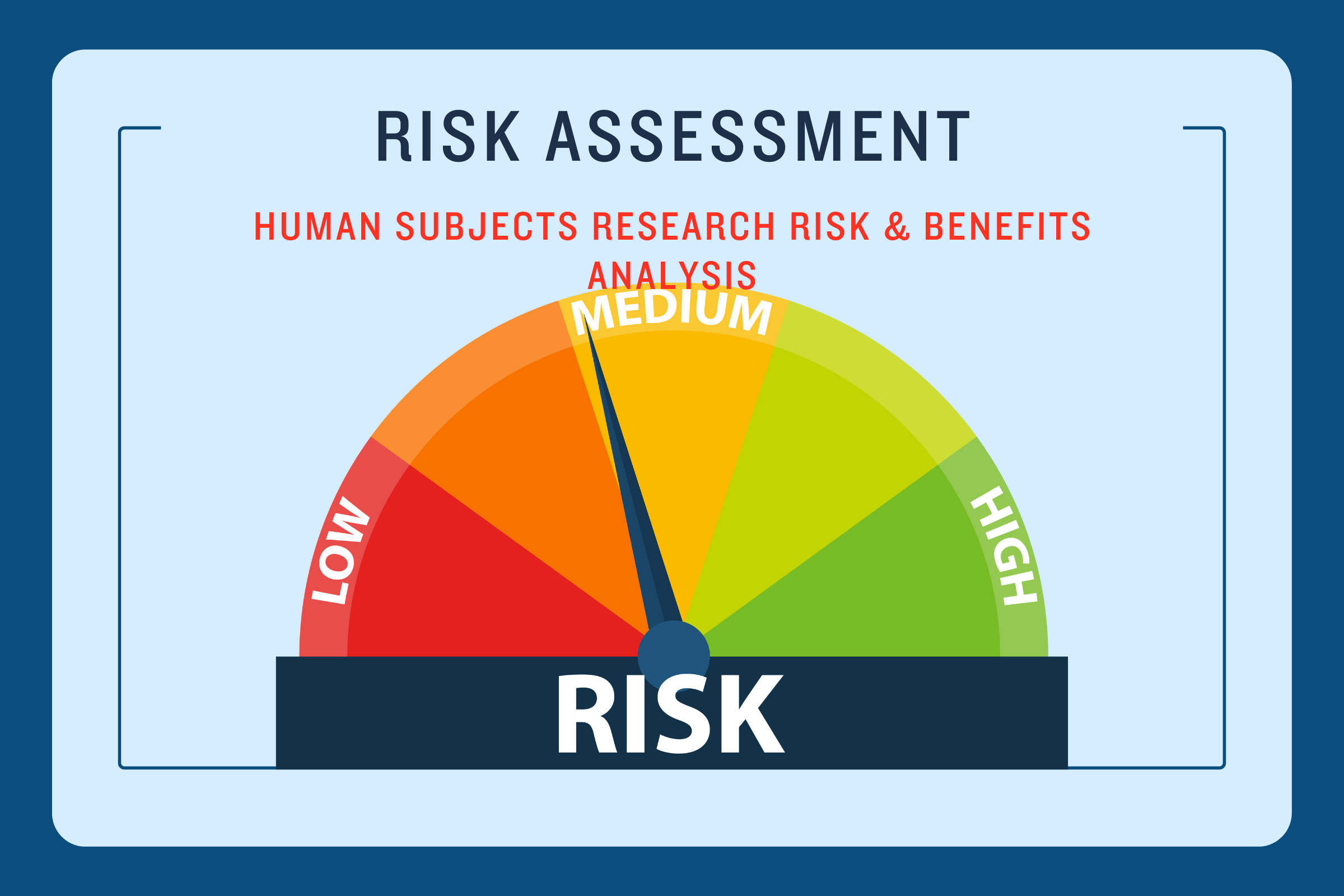Once the potential risks and benefits are identified, an ethical review of research requires an examination of the relationship of the risks to the benefits.
Risks and benefits cannot be considered parallel constructs and, therefore, no formula is applicable. The various ethical codes and regulations, however, require a favorable balance between harm and benefit. Only the risks associated with the research procedures should be used in determining the risk/benefit ratio.
To assist the investigator and the IRB in assessing the risk/benefit relationship the following principles are provided.
- In non-therapeutic research the potential risk to the subject must be outweighed or balanced by the potential benefit to the subject and/or by the potential benefit to society.
- In research where a standard therapy (not part of the research protocol) is employed solely for the benefit of the subject along with additional procedures performed solely for research purposes, the anticipated benefits of the therapy must not be used to justify exposing subjects to the risks associated with the research procedures. Such risks can only be justified considering the potential benefits of the research procedures.
- Medical research often involves exposure to minor pain, discomfort, or injury from invasive medical procedures, or harm from possible side effects of drugs. All of these factors should be considered “risks” for purposes of IRB review. Some of the adverse effects that result from medical procedures or drugs can be permanent, but most are transient. Procedures commonly used in medical research usually result in no more than minor discomfort (e.g., temporary dizziness, the pain associated with venipuncture).
- Participation in research may result in undesired changes in thought processes and emotion (e.g., episodes of depression, confusion, or hallucination resulting from drugs, feelings of stress, guilt, and loss of self-esteem). These changes may be transitory, recurrent, or permanent. Most psychological risks are minimal or transitory, but some research has the potential for causing serious psychological harm.
- Invasion of privacy is a risk as it usually involves either covert observation or “participant” observation of behavior that the subjects consider private. The IRB must make two determinations:
- Is the invasion of privacy involved acceptable considering the subjects’ reasonable expectations of privacy in the situation under study;
- Is the research question of sufficient importance to justify the intrusion?
- Some invasions of privacy and breaches of confidentiality may result in embarrassment within one’s business or social group, loss of employment, or criminal prosecution. Areas of sensitivity are information regarding alcohol or drug abuse, mental illness, illegal activities, and sexual behavior. Some social and behavioral research may yield information about individuals that could “label” or “stigmatize” the subjects. (e.g., as actual or potential delinquents or schizophrenics). Confidentiality safeguards must be strong in these instances. Participation in research may result in additional actual costs to individuals. Any anticipated costs to research participants should be described to prospective subjects during the consent process.
International Research and Minimal Risk
Research conducted across boards in non-United States locations with possible cultural sensitivities may have circumstances that require special attention to risks to participants, researchers and/or communities. Such risks and any measures to mitigate them should be addressed, where appropriate, in the IRB submission.
Examples of issues which should be addressed fully are:
- Risks to researchers inherent in the location of the research (e.g. war-torn countries, volatile conditions)
- Risks to research subjects, particularly those due to power imbalances (e.g. between subject and researcher; between subject and individuals/groups receiving research results)
- Language and cultural sensitivities
If any of these risks are deemed to be greater than minimal, then full board review will be required. In addition to TC IRB approval, any requirements for local permissions, licenses or agreements should be investigated and such requirements must be in place before the research begins.
Randomization and Minimal Risk
In determining whether a randomized, controlled trial should be designated as minimal risk, the potential sources of risk that must be considered are as follows:
- Physical risk from study treatments,
- The loss of individualized care,
- Risk from non-therapeutic components of the research protocol,
- The psychological impact of participation, particularly if the research takes place without informed consent in an emergency setting.
The risks of research participation should be considered in comparison with the risk of nonparticipation; e.g., the risks specific to research participation should be considered separately from the risks inherent in treatment of the potential research participant's underlying condition.
Participation in a randomized, controlled trial may pose no more than minimal risk when:
- All of the treatment options included in the research study fall within the current standard of care and that standard of care does not present greater than minimal risk,
- The non-therapeutic components of the research are safely under the minimal risk threshold,
- There is an expedited review category to cover every research activity described as part of the protocol,
- The potential for research participation to have a negative psychological impact on participants or their families is considered to be minimal or less than minimal.
If the expedited study is randomized, then the requirement for informed consent should only be waived to the extent necessary, and opportunities for the research participant or surrogate to decide whether to participate in the research should be maximized.
